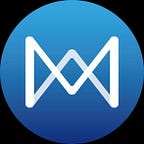QuarkChain Announces Official Launch of Testnet 2.5: The Last Round of Testnet before Mainnet
Mining event participants, please switch to the new testnet.
To better test and demonstrate several critical new features in the mainnet, we will upgrade Testnet 2.4 and launch Testnet 2.5. Testnet 2.5 will further improve the security and flexibility of the network.
QuarkChain mainnet 1.0 will be officially launched on April 30, 2019 UTC+8. In order to test the supports for multi-native-tokens and PoSW consensus mechanism and enhance the security of the network, Testnet 2.5 will serve as the last round of testnet before mainnet. Testnet mining event will be extended to the mainnet launch, and the mining rewards will increase by 1 million QKC.
Just a kind reminder: When the height of root block reaches 58,000, the current testnet (network id 24) will be replaced with a new testnet (network id 25) from genesis block. We will cut a new release and provide a corresponding docker image for clusters and mining! Steps for mining should be the same as the last version. Miners need to switch to the new testnet. We provide huge incentives to encourage more community members to participate in the mining event to experience the features and performance of the mainnet ahead of time.
For more information, please refer to https://github.com/QuarkChain/pyquarkchain/wiki/Testnet2-Schedule
QuarkChain not only fulfills the promised functions in the whitepaper but also adds some advanced features to Mainnet 1.0 to enhance the blockchain industry. Two new features are explained as follows:
Support Multi-Native-Tokens
Any user is able to create native tokens as long as the user pays sufficient gas represented by existing native tokens. A user could use a single-step payment to transfer any native token and complete the rest of transactions (services) atomically, without the occurrence of a situation similar to “paying ETH as a GAS fee for ERC 20 transaction.” Multi-native-tokens enable token economics to be more flexible. In addition, relying on the multi-native-tokens, users trading on the QuarkChain network could use any native token as gas for a transaction, which makes transaction much flexible.
PoSW Consensus Mechanism
Briefly speaking, PoSW combines the two main features of PoW and PoS, incentivizing miners by staking. The higher percent of all hash power of the network is, the more stakes will be needed to mine.
The basic idea is that, if a miner wants to contribute its all hash power to the network (suppose p percent of all hash power of the network), the miner must stake the number of tokens that is proportional to p. This means that to perform a double-spending attack, the attacker has to stake some amount of tokens besides 51% of the hash power of the network. In addition, a mining pool will be more costly to run since the owner of the pool must acquire sufficient stake before maximizing the efficiency of all hash power the pool collected.
Appendix
- Supporting Multi-Native-Tokens in a Single Blockchain:https://medium.com/quarkchain-official/supporting-multi-native-tokens-in-a-single-blockchain-686fc65f5931
- Slash in Proof of Staked Work with Example to ETC 51% Attackhttps://medium.com/quarkchain-official/slash-in-proof-of-staked-work-with-example-to-etc-51-attack-273f84c00742
Website
https://www.quarkchain.io
Discord
discord.me/quarkchain
Telegram
https://t.me/quarkchainio
Twitter
https://twitter.com/Quark_Chain
Medium
https://medium.com/quarkchain-official
Reddit
https://www.reddit.com/r/quarkchainio/
Facebook
https://www.facebook.com/quarkchainofficial/
